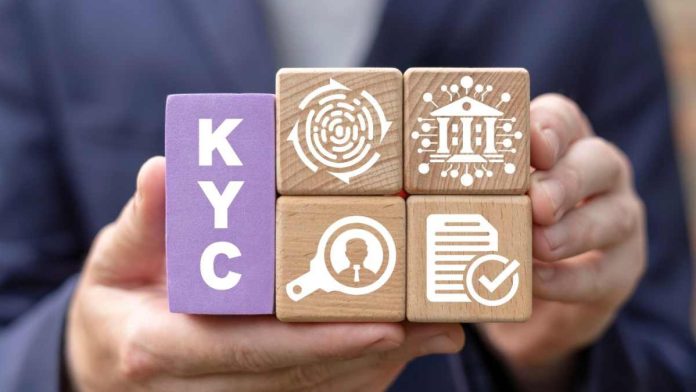The CKYCRR record is a key component of India’s digital financial infrastructure. It plays a crucial role in streamlining and securing the Know Your Customer (KYC) process for individuals engaging with banks, insurance companies, mutual funds, and other financial institutions.
Table of Contents
What Does CKYCRR Stand For?
CKYCRR stands for Central KYC Records Registry. It is a centralized repository where your verified KYC information is stored digitally. This includes documents such as your PAN, Aadhaar, passport, proof of address, and a photograph.
The system is managed by the Central Registry of Securitisation Asset Reconstruction and Security Interest of India (CERSAI) and functions under the regulations of bodies like the Reserve Bank of India (RBI), the Securities and Exchange Board of India (SEBI), and the Insurance Regulatory and Development Authority of India (IRDAI).
How Does the CKYCRR System Work?
1. Submission of KYC Documents
When you open a bank account, apply for a loan, invest in mutual funds, or purchase insurance, you are required to submit KYC documents. The financial institution you apply through is called the Reporting Entity (RE).
2. Uploading to CKYCRR
Once your documents are verified, the RE uploads your data to the CKYCRR. This information is stored in a secure database, and a unique 14-digit number called the KYC Identifier (KIN) is assigned to your record.
3. Retrieval and Sharing
Once your CKYCRR record exists, you can share your KYC details with any other financial institution using your KIN. With your consent, these institutions can fetch your KYC data from the registry, eliminating the need to resubmit documents repeatedly.
What Is a CKYCRR Record-Bearing Reference?
A CKYCRR record-bearing reference refers to your unique 14-digit KYC Identifier Number (KIN). This number links to your stored KYC record in the central registry. Financial institutions use this reference number to retrieve your verified data when you interact with them.
Who Uses CKYCRR?
CKYCRR is utilized by a wide range of financial entities, including:
- Public and private banks
- Cooperative banks
- Mutual fund companies
- Insurance providers
- Non-Banking Financial Companies (NBFCs)
- Pension fund managers
All of these entities are required by law to comply with KYC norms and are authorized to access CKYCRR data, with the customer’s permission.
Benefits of the CKYCRR Record
1. One-Time KYC
You only need to complete the KYC process once. After your CKYCRR record is created, you can use the same KIN across multiple financial institutions.
2. Time and Cost Efficiency
CKYCRR reduces delays and administrative costs in verifying customer identity, allowing for faster onboarding and approval processes.
3. Greater Accuracy
Since records are stored digitally and centrally, there is less chance of errors, duplication, or outdated information being used.
4. Enhanced Security
Digital records minimize the risk of physical document tampering, loss, or fraud.
5. Regulatory Compliance
CKYCRR supports institutions in meeting KYC and anti-money laundering (AML) regulations set by regulatory authorities.
CKYCRR 2.0: The Next Phase
A new version of CKYCRR, often referred to as CKYCRR 2.0, is under implementation with several improvements:
- Use of facial recognition and AI to detect duplicate records
- Better integration with platforms like DigiLocker
- Real-time notifications and metadata access to track usage
- Introduction of record “trust scores” for transparency
These enhancements are aimed at making the system more secure, efficient, and user-friendly.
What Do CKYCRR Alerts Mean?
If you’ve received a message like:
“Your CKYCRR record bearing reference 12345678901234 was fetched by XYZ Bank on 01/07/2025 – CERSAI”
this means that a financial institution has accessed your KYC record using your KIN. These alerts are sent for transparency and security, ensuring you are aware when and by whom your data is accessed.
If You Receive Unexpected Alerts
Sometimes, users receive such notifications without recalling any recent applications. If that happens:
- Check if someone else (like a family member) used your documents
- Review your credit report for any unauthorized applications
- Contact the bank or institution named in the message
- Report concerns to CERSAI or the financial regulator
How to Check or Update Your CKYCRR Record
To Check:
- Some banks list the KIN in passbooks or statements
- Certain apps and portals allow you to check using your PAN or Aadhaar
- Missed call services or SMS alerts may be available from your bank
To Update:
- Visit a bank branch, mutual fund office, or registered intermediary
- Submit updated address, phone number, or ID proof
- Ensure the RE uploads the changes to CKYCRR for the updates to reflect system-wide
Conclusion
What Is a CKYCRR Record? A CKYCRR record is your digital KYC identity used across India’s financial ecosystem. It simplifies the customer verification process by enabling financial institutions to access your verified documents with your consent using a single identifier.
Whether you’re opening a savings account, applying for a loan, or investing in mutual funds, having an updated and accurate CKYCRR record speeds up the process and improves security.

